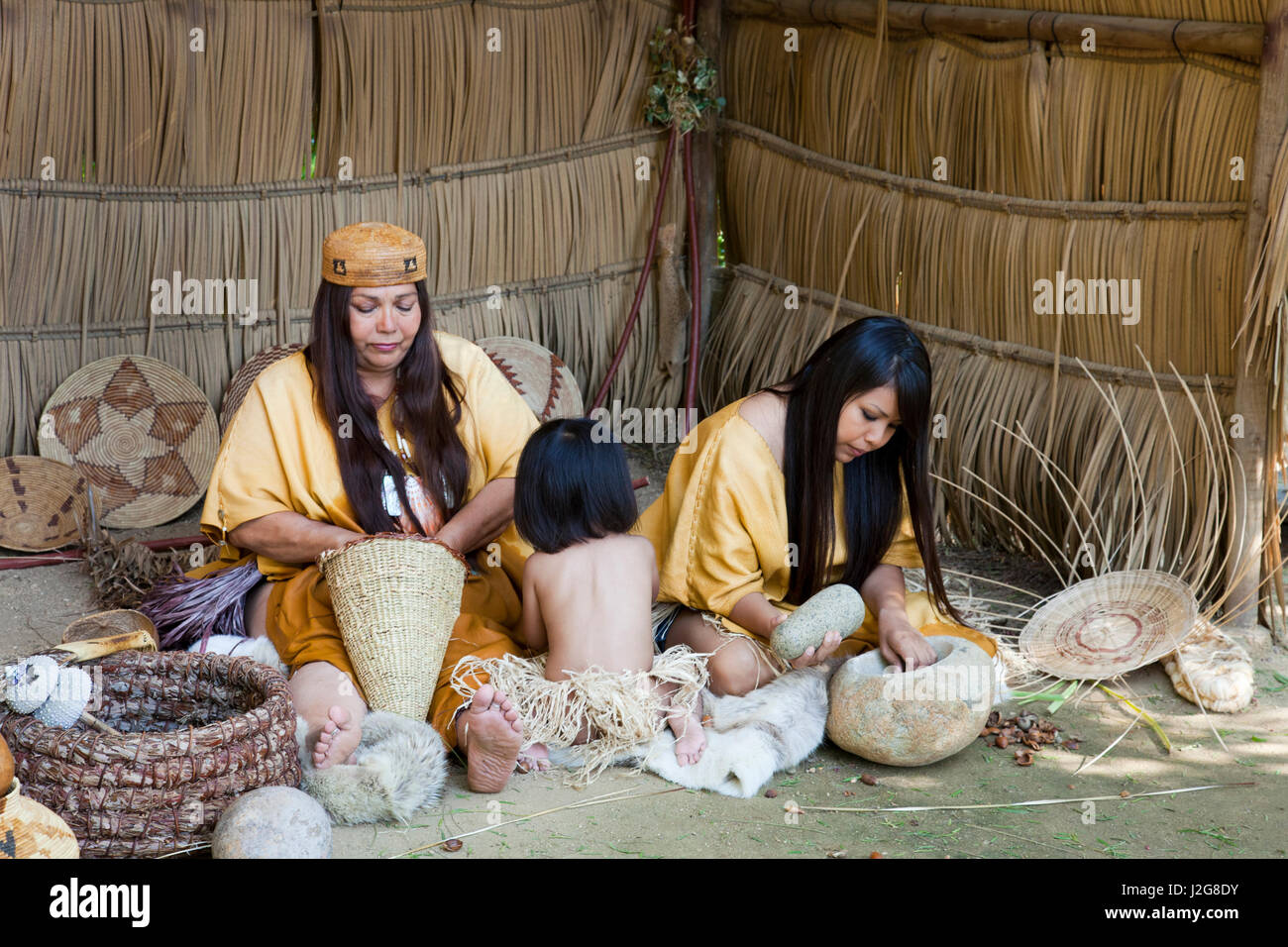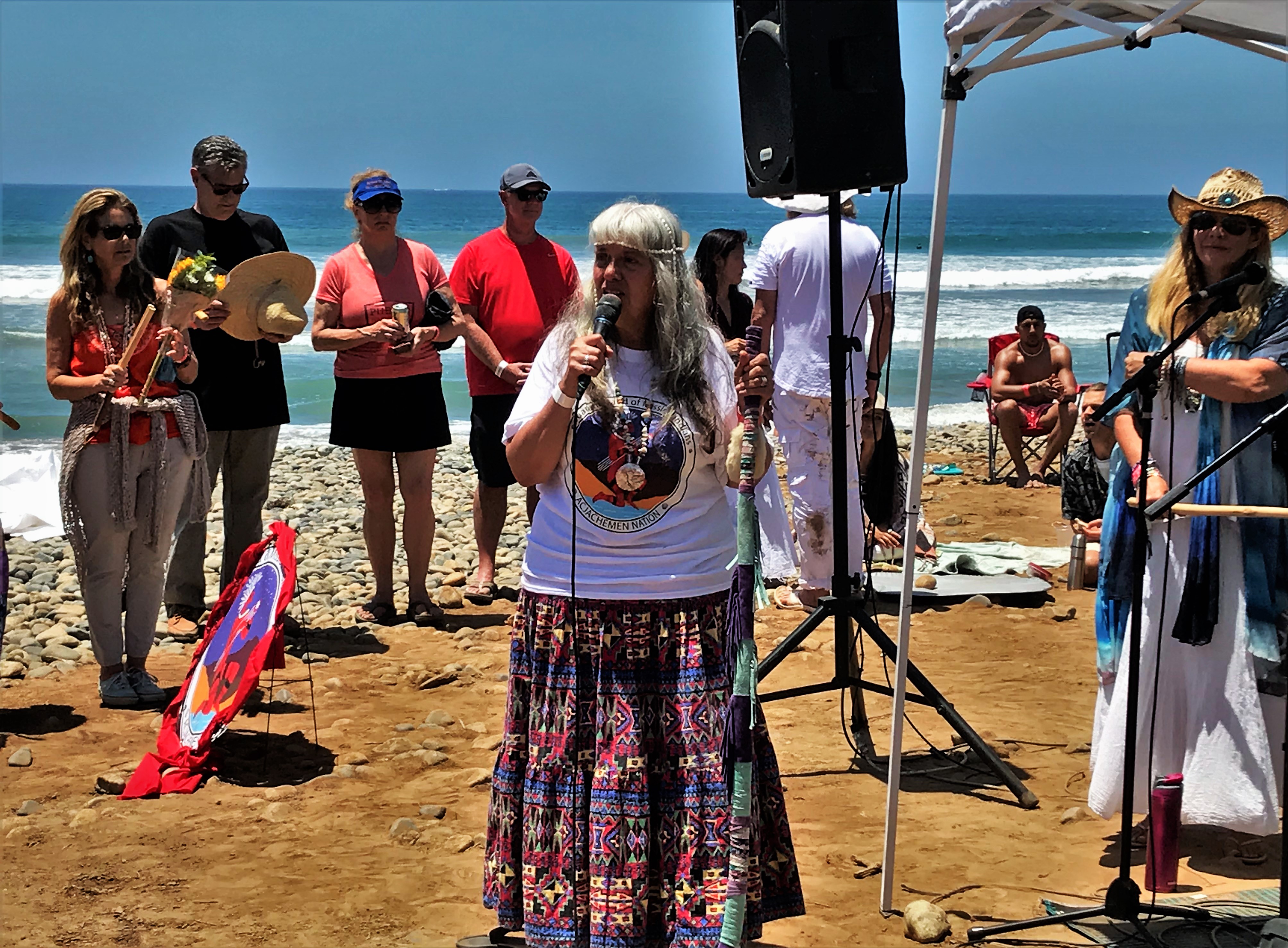
The Enduring Heartbeat of the Land: The Acjachemem People’s Fight for Identity and Future
Beyond the iconic mission bells and the legend of the swallows returning to San Juan Capistrano lies a story far older, more profound, and often deliberately obscured: that of the Acjachemem people. They are the original inhabitants of a vast and fertile territory encompassing much of what is now Orange County and parts of northern San Diego County in Southern California. For centuries, their vibrant culture thrived in harmony with the diverse ecosystems of the coast, mountains, and valleys. Today, amidst the relentless sprawl of Southern California, the Acjachemem continue a tenacious fight – for recognition, for their sacred lands, and for the preservation of a heritage that refuses to be erased.
A Pre-Colonial Tapestry of Life

Before the arrival of European colonizers, the Acjachemem lived a sophisticated hunter-gatherer existence, organized into independent, self-governing villages. Their society was deeply connected to the land, their spiritual beliefs intertwined with the natural world. They harvested acorns from the abundant oak groves, fished the rich coastal waters, hunted deer and smaller game, and gathered an array of native plants for food, medicine, and tools. Their oral traditions, ceremonies, and intricate basketry were testaments to a rich cultural tapestry passed down through generations.
"Our ancestors lived here for thousands of years, guided by the seasons, by the wisdom of the land," explains Joyce Perry, an Acjachemem elder and cultural preservationist, her voice resonating with deep respect for her forebears. "Every plant, every animal, every stream had a purpose, a teaching. We were part of this land, not separate from it."
Their language, a dialect of the Luiseño language group, was the vehicle for their stories, their knowledge, and their connection to the spiritual realm. They were skilled artisans, creating beautiful and functional tools, pottery, and especially baskets, which were not just utilitarian objects but expressions of their spiritual worldview and identity.
The Cataclysm: Missions and Dispossession
The arrival of Spanish padres in 1776, and the subsequent establishment of Mission San Juan Capistrano, marked an epochal and devastating shift for the Acjachemem. Renamed "Juaneño" by the Spanish, a name still used by the federally unrecognized Juaneño Band of Mission Indians, the people were forcibly relocated, converted, and subjected to a brutal system of forced labor. Their traditional spiritual practices were suppressed, their language forbidden, and their social structures dismantled. Disease, introduced by the Europeans, decimated their populations.
"The mission period was an apocalypse for our people," says Jerry Nieblas, a descendant of Acjachemem lineage and former president of the San Juan Capistrano Historical Society. "It wasn’t just about forced labor; it was about the attempted eradication of our very identity, our spirit. Yet, we survived. We adapted, we resisted in subtle ways, and we held onto what we could."
Despite the immense pressures, the Acjachemem found ways to preserve fragments of their culture. Oral traditions continued in secret, spiritual practices adapted, and knowledge of the land persisted, often passed down through clandestine means. The memory of who they were, and who they continued to be, endured.
The subsequent Mexican and American periods brought further dispossession, as their ancestral lands were parceled out to ranchers and later developed into towns and cities. The Acjachemem, like many other California tribes, were deemed "extinct" or "vanishing" by the dominant society, their existence denied and their rights ignored.

The Fight for Federal Recognition: A Battle for Identity
One of the most pressing and ongoing struggles for the Acjachemem people today is the fight for federal recognition. The Juaneño Band of Mission Indians, Acjachemen Nation, has been pursuing this elusive status for decades. Federal recognition is more than a bureaucratic designation; it is the ultimate affirmation of sovereignty, providing access to essential resources for healthcare, education, housing, and economic development, and, crucially, the right to self-governance over their own affairs.
The process is notoriously arduous, requiring tribes to demonstrate continuous existence as a distinct community from historical times to the present day, despite the deliberate efforts of colonizers to break down their social and political structures. This is a monumental task for a people whose records were often destroyed, misinterpreted, or simply never created by the dominant society.
"Without federal recognition, we are constantly fighting for our voice to be heard, for our rights to be respected," explains Heidi Lucero, current Chairwoman of the Juaneño Band. "It’s not about money for casinos, as some assume; it’s about our identity, our sovereignty, our ability to protect our sacred sites, and to provide for our community like any other nation."
The lack of recognition leaves the Acjachemem vulnerable. Their sacred sites are often unprotected, their historical narratives marginalized, and their claims to ancestral lands easily dismissed by developers and government agencies.
Puvungna: A Sacred Site Under Siege
Perhaps no site embodies the enduring struggle for cultural preservation and recognition more acutely than Puvungna. Located on the campus of California State University, Long Beach (CSULB), Puvungna is considered by the Acjachemem and neighboring Tongva (Gabrieleño) people to be their sacred birthplace, a spiritual heartland where their creator, Chinigchinich, is believed to have taught their ancestors. It is a vital archaeological site, holding the remains of ancient villages, burial grounds, and ceremonial areas.
Despite its undeniable cultural and historical significance, Puvungna has been under constant threat of development by CSULB. For decades, the university has sought to build on parts of the site, prompting impassioned protests, legal battles, and spiritual ceremonies from the Acjachemem and Tongva communities and their allies.
"Puvungna is not just land; it is our history, our church, our connection to our ancestors," says Rebecca Robles, an Acjachemem descendant and activist, her voice filled with a quiet intensity. "Developing it would be like paving over a cathedral, a cemetery, and a historical archive all at once. It’s an act of desecration."
The ongoing struggle over Puvungna highlights the broader challenges faced by unrecognized tribes in protecting their heritage when powerful institutions hold legal title to their sacred lands. It is a stark reminder that the fight for indigenous rights in California is far from over.
Cultural Revitalization: Reclaiming the Past, Building the Future
Despite the wounds of the past and the ongoing battles, the Acjachemem people are engaged in a powerful movement of cultural revitalization. There is a renewed effort to teach the Acjachemem language, to revive traditional ceremonies, and to pass down ancestral knowledge to the younger generations.
Basket weaving, a highly revered art form, is being taught anew, connecting practitioners to the materials and techniques of their ancestors. Storytelling sessions keep ancient narratives alive, reinforcing cultural values and historical memory. The annual Swallows Day Parade in San Juan Capistrano, while often focused on the mission, now sees a growing presence of Acjachemem people, proudly asserting their identity and their unbroken connection to the land.
"We are teaching our children not just the facts of our history, but the spirit of our people," says a young Acjachemem mother, attending a cultural workshop with her daughter. "They need to know who they are, where they come from, and the strength that lies within them."
The Acjachemem are also forging alliances with other Indigenous groups, environmental activists, and non-Native allies who understand the importance of preserving cultural heritage and protecting sacred lands. They participate in land acknowledgements, educate the public, and advocate for policies that respect Indigenous sovereignty and environmental justice.
Looking Forward: Resilience and Hope
The journey of the Acjachemem people is a testament to extraordinary resilience. From the brink of cultural annihilation, they have emerged with renewed strength and determination. Their story is a crucial chapter in the larger narrative of California, a reminder that the land holds memories far deeper than recent history, and that the voices of its original caretakers continue to echo.
Their fight for federal recognition, for the protection of sacred sites like Puvungna, and for the full revitalization of their culture is not just about the past; it is about securing a just and equitable future. It is a future where the Acjachemem people, as the enduring heartbeat of the land, can thrive once more, sharing their ancient wisdom and vibrant culture with the world, ensuring that their story, truly, is never forgotten. The mission bells may ring, but the deeper, older rhythm of the Acjachemem spirit continues to resonate, a testament to an unbreakable connection to their ancestral home.


